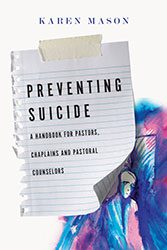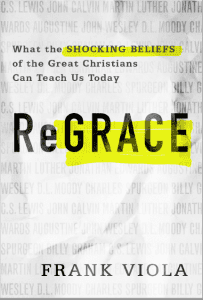 “Religion protects against suicide.”
“Religion protects against suicide.”
–Karen Mason, Preventing Suicide
At the heart of the Christian gospel is the promise of peace and joy: peace in our redemption from sin and reconciliation with a Creator Who loves us; joy in the promise of an eternal and restored life to come. It is a gospel of hope and life. A gospel of freedom and grace. It is a gospel of such great and unfathomable goodness that two millennia of theologians and philosophers and artists and poets are still working to pin it down. It is experiential. In infinite ways its greatness cannot be depicted or described.
But it is also a gospel intimately familiar with suffering: the suffering of generation after generation shackled to and tortured by sin, the suffering of a Christ Who took on this burden and died for it, the suffering of a Christ Who—we must not forget—cried out for rescue and died nevertheless. It is a gospel that must be chosen, and not everyone does. It is a gospel that requires its allegiants to persist in a world where evil thrives.
It is easer to talk about the good stuff. Which—because it is our responsibility to drag darkness into the light—is why it’s all the more important to talk about the flip side.
In Karen Mason’s Preventing Suicide: A Handbook for Pastors, Chaplains and Pastoral Counselors, Mason does just this, taking on what is perhaps one of the most challenging issues for the church to discuss in a way that is scholastically and theologically responsible and will undoubtedly inspire, encourage, challenge, and equip audiences far beyond the spiritual leaders and advisors to whom it is primarily addressed.
Combining her expertise in psychology with theology, Mason covers a lot of ground:
(1) She makes the strong case that suicide is a concern that the church cannot ignore. Among the extensive data she cites, readers will learn, for example, that:
- In the United States alone, one person dies by suicide every sixteen minutes.
- Over 39,000 Americans died by suicide in 2011, the last year for which data was collected.
- For every 1400 suicides per 100,000 people each year, 500 people attempt suicide and 3,000 think about it.
In other words, the likelihood that a congregation will be touched by suicide is nearly assured. In fact, Christian history is full of individuals who grappled with feelings of extreme depression (the number one psychological risk factor for suicide) or who even wished for death (Job, Moses, Elijah, Jonah, Rebekah, Rachel, and Jeremiah as well John Donne, Martin Luther, C.H. Spurgeon, and Martin Luther King, Jr.).
2) She cites the fact that religious adherence (specifically, church attendance, dependence on spiritual practices like prayer and the reading of scripture for strength, and counseling with religious leaders) is a primary risk prevention factor for suicide as a starting point for equipping Christian leaders know how to intervene. This includes:
- Dealing with common misconceptions about who is most likely to commit suicide and the factors that lead to this decision
- Considering the theological problems and unacknowledged complexities of common Christian responses to suicide (for example, she points out that the all-too-common claim that someone who is suicidal isn’t a “real” Christian is illogical because “To argue that a suicidal Christian is an unworthy Christian or non-Christian because he or she does not apprehend some of God’s truths is to argue that we are all unworthy Christians or non-Christians because we all know God imperfectly.”)
- Emphasizing the importance of each spiritual leader developing a clear theology of suicide, a project which is important because theology impacts one’s behavior and interaction with others, because Christians hold a range of beliefs which leaders must be equipped to respond to, and because few denominations have a stated position on suicide
(3) Having led spiritual leaders and counselors through the psychological and theological aspects of understanding suicide, she equips them to deal in practical ways with a variety of relevant populations, including:
- individuals considering suicide
- individuals who have attempted suicide and survived
- the family and friends of individuals who are suicidal
- the family, friends, and faith community who are left behind when a loved one dies by suicide
Though suicide will undoubtedly never be an easy issue for religious leaders to navigate, nor will it ever be entirely preventable, Mason provides a resource that will likely go a long way towards providing her readers with the confidence to begin attempting intervention and providing better and more informed guidance.
A search on Amazon for books on suicide under the category of Christianity yields just shy of 500 titles. The vast majority of these texts are written for the survivors of suicide or describe various theologies and theories of suicide. Only a handful center on prevention, and Mason’s work is so expansive and comprehensive; so simultaneously scientific, theologically-grounded, and practical; so well and clearly written; and so rich in resources that it will unquestionably serve as a unique and essential resource for Christian leaders and counselors.
Read an excerpt from Preventing Suicide – and a Q&A with the author — at the Patheos Book Club here.
 Amber M. Stamper holds a Ph.D. in English (Rhetoric and Composition) and is an Assistant Professor of Language, Literature, and Communication at Elizabeth City State University in North Carolina. Her research and publications center on religious rhetoric and communication, especially issues of Christian evangelism and the digital church.
Amber M. Stamper holds a Ph.D. in English (Rhetoric and Composition) and is an Assistant Professor of Language, Literature, and Communication at Elizabeth City State University in North Carolina. Her research and publications center on religious rhetoric and communication, especially issues of Christian evangelism and the digital church.












